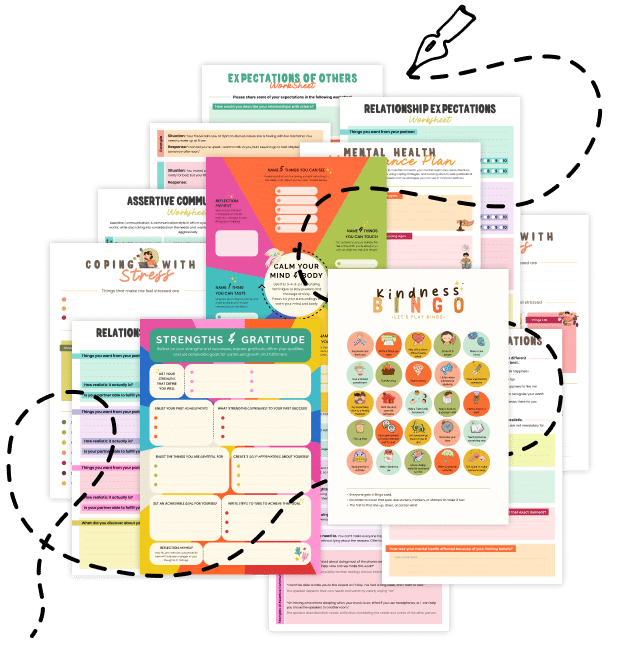20 Things About Procedural vs. Declarative Memory
Discover how these two core types of memory—procedural vs. declarative memory—shape your daily actions, skills, and knowledge retention: what they are, how they differ, and why they’re essential for learning and performance.
1. The Basics: What Are Procedural vs. Declarative Memory?
- Procedural Memory involves unconscious, skill-based tasks—like riding a bike or tying your shoes.
- Declarative Memory stores factual knowledge (e.g., names, dates, concepts) that you can consciously recall.
2. Where They Live in the Brain
- Procedural Memory is heavily linked to the basal ganglia and cerebellum, brain areas that coordinate movement and habit formation.
- Declarative Memory relies on the medial temporal lobe, including the hippocampus, which is vital for storing new facts and experiences.
3. Implicit vs. Explicit
- Procedural Memory is often called “implicit” because it’s accessed automatically without conscious thought.
- Declarative Memory is “explicit,” requiring active recall, like recalling what you learned in history class.
4. Learning Styles Differ
- Procedural Learning often comes from repetition and practice (e.g., practicing a golf swing).
- Declarative Learning usually involves studying, reading, or listening to information you want to remember.
5. Skill Development Over Time
- Building Procedural Memory typically takes longer but becomes deeply ingrained. Once mastered, skills can last a lifetime with minimal refresh.
- Declarative Memory may be quicker to acquire but can fade if not revisited or applied.
6. Real-World Examples
- Procedural: Driving a car, typing on a keyboard, playing a musical instrument.
- Declarative: Remembering your friend’s birthday, the state capitals, or the steps in a math formula.
7. The Role of Sleep
Both types of memory benefit from quality rest. During sleep, the brain consolidates what you’ve learned—making new skills and facts more stable and accessible.
8. How Stress Affects Each
- High stress can disrupt Declarative Memory, making it harder to recall facts.
- Procedural Memory can sometimes remain intact under stress (think of a seasoned performer who can still play piano pieces even if they’re anxious).
9. Transfer of Training
Skills in Procedural Memory can transfer to similar tasks (e.g., learning one language can ease learning another). Declarative Memory also transfers when you connect new information to existing knowledge.
10. Common Pitfalls
- Procedural Memory: Overreliance on “muscle memory” might cause you to miss advanced strategies or neglect mindful improvements.
- Declarative Memory: Cramming facts without applying or reviewing them leads to quick forgetting.
11. Use in Education
Educators often combine practical exercises (to build procedural skills) with lectures or readings (to strengthen declarative knowledge), aiming for well-rounded learning.
12. Importance in Workplace Training
- Procedural Memory is crucial for roles requiring hands-on tasks, like manufacturing or coding shortcuts.
- Declarative Memory is key for roles demanding knowledge-based tasks, like consulting or research.
13. Enhancing Procedural Memory
Regular, deliberate practice—focusing on incremental improvements—strengthens procedural retention and speed. Consistency is key to forming robust, automatic skills.
14. Boosting Declarative Memory
Using mnemonic devices, flashcards, and spaced repetition are tried-and-true methods for reinforcing declarative knowledge. Teaching or explaining concepts also cements them in your mind.
15. Brain Plasticity and Adaptability
The more you engage your brain in learning—whether procedural or declarative—the more agile and plastic it becomes, supporting mental health and longevity.
16. The Role of Emotion
- Procedural Memory can be enhanced by positive emotions tied to skill mastery.
- Declarative Memory can be strongly imprinted if connected with emotional events (e.g., vividly remembering where you were on a significant day).
17. Potential for Decay
- Procedural Memory decays slowly; once a skill is deeply ingrained, you retain the basics for a long time (the “it’s like riding a bike” effect).
- Declarative Memory fades faster if not revisited or used—out of sight, out of mind.
18. Working Together
In many tasks, both types of memory collaborate. For instance, cooking a recipe from memory uses declarative knowledge (ingredients, steps) and procedural skill (chopping techniques, stove usage).
19. Tech Tools for Support
- Procedural Memory: Video tutorials, simulated practice (like flight simulators), and feedback tools can reinforce skills.
- Declarative Memory: Flashcard apps, note-taking software, and online quizzes help you review information strategically.
20. Related Topics to Explore
- Procedural Memory Hacks: Discover techniques to streamline and optimize skill-based learning.
- Spacing Effect: Learn how timing your reviews improves declarative memory retention.
- Conceptual Chunking: Break information into manageable “chunks” to enhance understanding.
- Sleep-Dependent Learning: Understand the vital role of sleep in consolidating both skill sets and facts.
Quick Tips to Boost Procedural vs. Declarative Memory
- Practice with Purpose: Focus your repetitions on specific improvements to strengthen procedural skills.
- Apply Information: Use real-world examples to reinforce declarative knowledge—don’t just read it once.
- Use Mnemonics: Create memory aids—like acronyms or visual images—for easier fact recall.
- Prioritize Rest: Aim for consistent sleep schedules to help consolidate both skill-based and factual learning.
- Stay Curious: Explore new activities and subjects; engaging your brain in diverse tasks keeps your memory systems sharp.
Understanding how Procedural vs. Declarative Memory work can revolutionize your approach to learning, skill-building, and even career development. By practicing deliberate techniques for each type, you’ll be better equipped to retain what you learn and perform at your best. Share this article with friends, colleagues, or anyone aiming to sharpen their cognitive toolkit!


